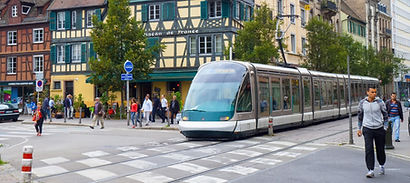With the contribution of the LIFE programme of the European Union - LIFE14 ENV/GR/000611
CIVITAS SUMPs-Up project launches 1st call for planning authorities
CIVITAS SUMPs-Up is an EU-funded project with a focus on helping cities develop Sustainable Urban Mobility Plans (SUMPs) - strategic long-term planning documents that integrate all transport modes and balance environmental, social and economic factors.
A SUMP's central goal is improving the accessibility of urban areas and providing high-quality and sustainable mobility and transport to, through and within the urban area. It regards the needs of the 'functioning city' and its hinterland rather than a municipal administrative region. The project assists mobility planning authorities, especially in countries where there are few SUMPs, to overcome the barriers that stop or make it difficult for them to implement the plans.
The CIVITAS SUMPs-Up project is recruiting planning authorities for its Innovation Pilot Pool (IPP), a select group of transport and urban mobility planning practitioners who will develop innovative tools and services to help SUMP development in European cities. The current call seeks 40 participants for the Expert Group and 10 participants for the Leadership Group, who will participate for six months and three years respectively.The remaining 50 participants in the IPP scheme will be selected via similar calls for applications opening in 2018 and 2019.
Apply to the first CIVITAS SUMPs-Up call for planning authorities by 24 May 2017 here
The European Commission is working closely with the Member States to ensure the SUMP concept is adapted to the specific requirements and existing planning practices in each Member State and actively promoted at national level in order to reach hundreds of cities in Europe.
For more information: click here.

The LIFE GYM [LIFE14 ENV/GR/000611] project is co-funded by the LIFE programme, the EU financial instrument for the environment.
The sole responsibility for the content of this report lies with the authors. It does not necessarily reflect the opinion of the European Union. Neither the EASME nor the European Commission are responsible for any use that may be made of the information contained therein.
Start Date: 15 September 2015 – Duration: 35 months








